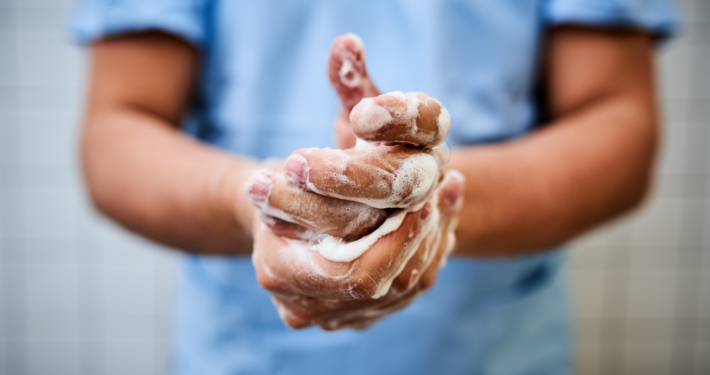Benzalkonium Chloride (BZK) is an Effective Alternative to Alcohol-based Hand Sanitizers in Healthcare Settings
BZK-based products provide persistent antibacterial activity and are less harsh on the skin, leading to improved hand hygiene compliance
By: Richard Rich
Hand hygiene is a crucial aspect of preventing the spread of infections in healthcare settings, and alcohol-based hand sanitizers have long been the standard for disinfecting the hands of healthcare workers (HCWs). However, a new hand hygiene product containing benzalkonium chloride (BZK) as the active ingredient is showing promise as an effective alternative to alcohol-based hand sanitizers, particularly when it comes to compliance with hand hygiene protocols.
BZK is a quaternary ammonium compound that has been used for almost 90 years as a surface disinfectant in the food industry and as a skin sanitizer. It works by penetrating and damaging the bacterial cell wall, leading to cell membrane structural integrity and eventually the disintegration of the cell by rupture of the cell wall or membrane.
Recent studies have shown that benzalkonium chloride -based hand sanitizers can provide persistent antibacterial activity on the skin for up to 4 hours, compared to essentially no persistent activity with ethanol-based sanitizers.[1] In addition, BZK products are less drying and irritating to the skin than alcohol-based hand sanitizers, which can lead to skin cracking redness and dermatitis. This is especially important for HCWs who may be using hand sanitizers multiple times a day.
The Centers for Disease Control and Prevention (CDC) has expressed concern about a slowing of progress in reducing nosocomial infections, caused by Staphylococcus aureus, despite adherence to CDC recommendations for preventing device- and procedure-associated infections. According to the CDC, S. aureus is responsible for about 20% of nosocomial infections in the United States. The CDC has recognized that hand hygiene compliance is a major factor in preventing hospital-acquired infections (HAI).
A study conducted by Medical Spark Biologics evaluated the use of a benzalkonium chloride -based hand sanitizer product in “real-world” conditions, comparing it to a 70% ethanol-based hand sanitizer in terms of reducing transient pathogenic staphylococci from the hands of healthcare workers. [2] The study found that the benzalkonium chloride-based product was superior to the ethanol-based product in reducing the bacterial colony count of S. aureus on the hands of HCWs.
While it is unlikely that alcohol-based hand sanitizers will be completely replaced by benzalkonium chloride -based products in the near future, the use of benzalkonium chloride -based products as a supplement to the CDC-recommended hand hygiene protocol could lead to a reduction in nosocomial infections caused by S. aureus. The development of benzalkonium chloride -based products that are non-irritating, non-flammable, non-sticky, odorless, and easy to use could also lead to increased compliance with hand hygiene protocols among HCWs.
In conclusion, benzalkonium chloride -based hand sanitizers have been shown to be an effective alternative to alcohol-based hand sanitizers in reducing the bacterial colony count of S. aureus on the hands of HCWs. The persistence of BZK on the skin for up to 4 hours, along with the decreased drying and irritation of the skin compared to alcohol-based hand sanitizers, make benzalkonium chloride -based products a promising option for improving hand hygiene compliance and reducing nosocomial infections in healthcare settings.
Sources
[1] Bondurant S, McKinney T, Bondurant L, Fitzpatrick L. Evaluation of a benzalkonium chloride hand sanitizer in reducing transient Staphylococcus aureus bacterial skin contamination in health care workers. Am J Infect Control. 2020 May;48(5):522-526. doi: 10.1016/j.ajic.2019.08.030. Epub 2019 Oct 25. PMID: 31668935.
[2] Bondurant SW, Duley CM, Harbell JW. Demonstrating the persistent antibacterial efficacy of a hand sanitizer containing benzalkonium chloride on human skin at 1, 2, and 4 hours after application. Am J Infect Control. 2019 Aug;47(8):928-932. doi: 10.1016/j.ajic.2019.01.004. Epub 2019 Feb 16. PMID: 30777389.







